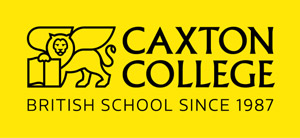 |
|
Monoprint by Pilar Calvo Atienza 9B
|
Is Creativity really essential to Education?
The creative industries in the EU employ as many people as the car industry, chemical industry and power generation combined and growth has been 3 times as fast as the whole economy since 2008. In Britain, it`s been described as a recession proof industry with a growth of 8.6% as opposed to a general economic growth of 0.7% in 2011-12 so the importance of creativity is clear.
However, it is not just a case of economic success, creativity incorporates a deep social and cultural purpose and even for those who will never work in a connected field it has intrinsic value as a transferable life skill and source of mental well-being.
Or to put it more succinctly, as Einstein did, ´The true sign of intelligence is not knowledge but imagination´.
How do we develop as creative and innovative thinkers?
The main inhibitor to creative and innovative thinking is the fear of making mistakes and the perception that there is a predicted desired outcome that must be emulated. Students can too often focus on the idea of what something shouldlook like, and the anticipated grade it would merit, rather than the process of discovery for itself. It’s by truly engaging with creative thinking and working with an open mind that real learning takes place.
The Caxton Architecture project, taught in year 9, is designed to promote the independent discovery of diverse forms of mark- making and collaborative creative thinking. The initial stages of the project focus on experimenting with charcoal, to discover new ways of working, before using it to create images of buildings and going on to explore monoprint and paper engineering. The limitations and the extended focus of a given material, rather than very open choice, help engender new ideas.
As I was invited to speak about ´Innovative Teaching´ in the U.K, at the annual Secondary Art Conference in Southampton, on Nov 10th I used this project as an example.
´Necessity may be the mother of invention, but play is certainly the father´. Roger von Oech
So how do we, as parents, encourage creative success?
· – By allowing for learning that isn’t always neat and predictable, accepting that mistakes are an essential part of the process and encouraging trial and error.
· – By not ´helping´ children to produce homework by actually working on it, which further undermines their confidence and can indicate that it’s the end product rather than the learning itself that is the goal.
· – By keeping alive the urge to create, that we all have as young children, and promoting participation free from the constraints of a ´formula´. Evaluating the preparatory work´s merits retrospectively and developing that which is worthwhile rather than eliminating risk earlier and thereby losing the opportunity to move forward.
´All children are artists. The problem is how to remain an artist once he grows up´ Picasso
Written for Caxton Blog by Liz Edwards November 2014





Déborah G.
I have found this article very interesting! Thank you Ms. Edwards.